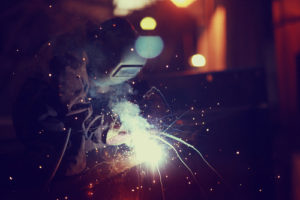Brass is one of the metals commonly used in the making of high quality products. An alloy of various metals, solid brass comprises of pure brass though and through, which means it is a dense, highly durable and expensive from of the metal. Pure brass pieces can cost a lot more than comparable zinc pieces, although the difference is justified by their superior physical qualities.
Compared to Zinc
Die cast hardware is most commonly made out of zinc, which is a malleable, bluish-white metal. Zinc is an element, meaning it occurs in nature. It is used in the manufacture of paints, hygiene products, and die cast hardware. Zinc costs a lot less than brass, but also carries the downside of being much lighter and less durable.
Solid Brass vs. Brass Plated Hardware
Solid brass, or die cast brass, simply signifies that the object is brass all the way through. The sheen of a pure brass die casting can always be restored with simple polishing, but you may need to first remove any old lacquer. Brass plated hardware, on the other hand, is usually zinc or steel underneath. Lacquer may be applied to the final product to protect the metal, so that it maintains its color. However, plating carries a shorter life span, and the thinner it is, the more quickly it would deteriorate.
Why Do We Lacquer Brass?

Brass Plated Hardware
Lacquer is essentially a clear coating, which serves to protect and preserve the metal under it, without changing its color in any way. In the case of brass, it cuts exposure to air, which would otherwise cause oxidation and tarnishing. A piece of brass can be re-polished or re-lacquered, but to do that one must first remove any existing layer of lacquer using lacquer thinner or paint. After making sure none of that is left on the surface, a fresh coat can be applied.
Telling the Difference
At first glance, a solid brass piece and a brass plated piece would look much the same. The first test you can run to tell them apart involves a magnet, which is what professional die casters usually use. Hold it to each piece and see which one does not react; that is solid brass, because the alloy is non-magnetic.
Another test you can try is scratching each piece, and watching what color the scratch reveals. Solid brass would show shiny yellow scratch, while something with steel, zinc, or other metal would exhibit a silver-colored scratch.
